Baseball in the United States
Baseball has been considered America's pastime for over a century and today remains one of the biggest sports in the country. Baseball is played at a number of amateur levels, from Little League to High School to College, and professional leagues range from the lowest Minor Leagues to Major League Baseball. In almost any place in America, there will be a baseball game going on during the spring and summer months, and it is a fantastic way to meet the locals and experience American sports culture.
Understand
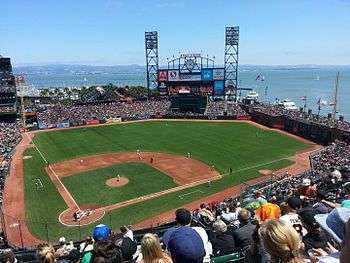
Baseball's origins are murky at best, and there is a lot of mythology behind it. But the game does bear similarities to cricket, which, like baseball, appears to have evolved from earlier bat-and-ball games popular in England and Western Europe. For decades, the invention of the game was attributed to Abner Doubleday, with the first game occurring in Cooperstown, New York (which remains to this day the home of the Major League Baseball Hall of Fame), but historians now agree that neither had anything do with the game's origins. Modern baseball's actual roots seem to be in several similar bat-and-ball games that were played throughout the United States in the 19th century, with a version from the New York City area becoming popularized and spread across the country during and after the Civil War.
The game is played between two teams, each with nine players active at a time. The teams take turns playing defense and offense, with the same players playing both roles. While on offense, players come to home plate in order and try to hit a thrown baseball with a wooden or aluminum bat, with the objective of sending it far enough away that the batter can reach base before the ball can be relayed there. On defense, each of the nine players has a set position on the field: one pitcher, who throws the ball to the batter; one catcher, who catches any pitched balls that don't get hit; one baseman at or near each of the three bases; a shortstop between second base and third base; and three outfielders who roam the large expanse between the bases and the far edge of the playing field, trying to catch batted balls and relay them inward. Every defensive player wears a large leather glove (or mitt) on their non-throwing hand to aid in catching and fielding the ball. There is also a small group of umpires on the field who enforce the rules and make judgement calls on plays.
A batter has three chances, or strikes, to hit a ball into play; if the batter misses three times, he is out. The batter is also out if a hit ball is caught before touching the ground, known as a fly out, or if the ball is relayed to the base before the batter can reach it. The pitcher must give the batter a reasonable chance to hit the ball; if the ball is thrown outside of the strike zone (which is over the plate, between the batter's knees and armpits) and the batter doesn't swing at it, the pitcher is charged with a ball. If the batter swings at the ball and misses, it is considered to a strike regardless of where the ball is thrown at. Four balls to the same batter allows the batter to advance to first base automatically, called a walk. Prolific hitters are sometimes intentionally "walked" to avoid the chance of them getting a run-scoring hit.
.jpg)
Once a batter reaches base, he or she becomes a runner, and can attempt to advance to the next base if the ball is still far enough away. Wherever the runner stops, he or she waits at that base as the next batter comes up. The goal of the runner is to make it around the bases and back to home plate. The runner can try to advance to the next base at any time; normally this occurs when the batter puts the ball into play, but if the runner advances on a pitch that wasn't batted into play, it's called a steal. If there's an unoccupied base behind the runner, it's not enough for the defense to get the ball to the base before the runner; in order to record an out, the defense must tag, or physically touch the runner with the ball while it's held in a defensive player's glove or bare hand, before the runner reaches the base.
A ball hit out of play to the left of third base or the right of first base is foul and counts as a strike (unless the batter already has two strikes). If the batter hits the ball beyond the outfield wall within the foul lines, it's an automatic home run and the batter and all runners may freely advance to home plate. A home run, or "homer", is always sure to get the fans on their feet; it's the game's signature play. A home run that is scored with all three bases occupied (hence scoring four runs) is known as a grand slam, though this is quite rare. An even rarer event is an inside-the-park homer, in which the batter completes a trip around the bases while the ball is in the field of play.
If a runner reaches home plate safely, a run is scored, and the team with the most runs at the end of the game wins. A team keeps batting until three outs have been recorded, so they can score unlimited runs during their turn at bat. Once the third out is made, the teams switch sides. A full pair of these turns is called an inning, and the game lasts for nine innings (less at the amateur levels) unless the score is tied at the end. In the event of a tie, extra innings are played until an inning ends with one team ahead.
Beyond these basics, there are many quirks and special cases in the baseball rules, some of which baffle even die-hard fans to this day.
Major League Baseball
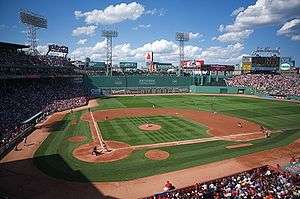
Major League Baseball (MLB) is the highest level of baseball played in the U.S. and the richest professional baseball league in the world. It attracts the highest level of talent from North America, Central America, South America, Asia, and the Caribbean. There are thirty major-league teams in twenty-five U.S. metropolitan areas (plus one in Canada); New York City, Chicago, the Los Angeles area, and the San Francisco Bay Area each have two teams. Every team plays in its own stadium, all of which seat at least 35,000 spectators.
Tickets generally cost between $15 and $50 for most seats; the best seats cost more — and sometimes much more. The New York Yankees, Boston Red Sox, Philadelphia Phillies and Chicago Cubs are the most difficult teams to get tickets for, but online seller-to-seller websites almost always have available tickets. Major League Baseball's season runs from early April to late September, with pre-season Spring Training games in March and the post-season playoffs in October. Games during the season are organized into series of 3-4 games in a row between the same two teams in the same city. Teams will play two or three series in a row at their home stadium, referred to as "homestands"; after which teams will play two or three series in a row at other teams' stadiums, referred to as being "on the road".
Since the 1990s, a wave of new ballpark construction has seen many stadiums built in lively neighborhoods with lots of bars and restaurants catering to fans. However, there are still certain stadiums that sit isolated in a sea of parking lots. Many ballparks, particularly the newer or the more famous ones, are open for tours on off-game days; see the individual city articles for further details.
Teams
Major League Baseball is divided into two leagues: the American League and the National League, each of which is further divided into three divisions: East, Central, and West.
The two leagues are primarily distinguished in that the American League uses the designated hitter rule where the pitcher does not hit and run bases; instead another player, called the designated hitter, or DH, bats in lieu of the pitcher. The National League does not use this rule and requires the pitcher to bat along with the other fielders. In games that involve teams from both leagues (called "interleague" games), the home team's rules are used.
Here is a run-down of all the teams and their respective stadiums:
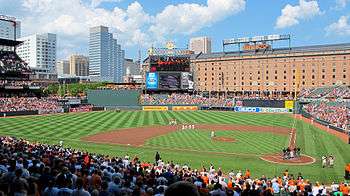
American League East
- Baltimore Orioles - Oriole Park at Camden Yards - Baltimore, Maryland (in South Baltimore). Camden Yards is notable for being the first of the "retro" ballparks in the major leagues: modern stadiums whose designs hearken back to classic, early-20th century ballparks. The success of Camden Yards sparked a wave of new ballpark construction across the country, but it's still regarded as one of the best. Nearby is the Babe Ruth Museum, preserving the house where the Great Bambino himself was born. The "O's" have very enthusiastic fans, who are known for yelling out the "O!" in the penultimate line of the national anthem.
- Boston Red Sox - Fenway Park - Boston, Massachusetts (in Fenway). The oldest active ballpark in the major leagues, Fenway Park is a celebrated stadium that has acquired certain quirks which are legendary among baseball fans. The most noted of these is the Green Monster, a particularly tall section of the left field wall that's, of course, painted green. The ballpark is relatively small by major league standards, tucked into an urban neighborhood of restaurants, taverns, and souvenir stores. Boston's famously rowdy fans (the "Red Sox Nation") are fiercely loyal to their team and their rivalry with the Yankees is legendary, ranking as arguably the most intense in American sports.
- New York Yankees - Yankee Stadium - New York City, New York (in the Bronx). Though not "The House That Ruth Built" stadium of old (which was replaced by a city park), the design of the new Yankee Stadium just across the street pays homage to the original in its design, both inside and out. An on-site museum covers the history of one of the most storied teams in baseball, and Monument Park in center field contains plaques dedicated to great players from the team's past. The Yankees are noted (and often vilified) for their frequent postseason appearances, with their record 27 championships unmatched in North American professional sports.
- Tampa Bay Rays - Tropicana Field - Saint Petersburg, Florida. After struggling as an expansion team, the Rays managed to rise to be a competitive force in the fierce American League East. They play in the uninspiring Tropicana Field, the only ballpark in MLB with a fixed dome roof and one of only two to still use artificial turf on the field instead of actual grass. On-site is a museum dedicated to Red Sox legend Ted Williams, who retired to the Tampa area, with exhibits and memorabilia on some of the best hitters in baseball history. Another highlight is a touch tank beyond the right-center field wall, where fans can touch and feed live stingrays.
- Toronto Blue Jays - Rogers Centre - Toronto, Ontario (in the Entertainment District), Canada. The only MLB team playing in Canada, the Blue Jays play in Rogers Centre, a massive stadium with a retractable roof (to protect against the colder Toronto weather) that sits in the shadow of the iconic CN Tower. Within the stadium is a hotel with rooms that overlook the field.
American League Central
- Chicago White Sox - Guaranteed Rate Field - Chicago, Illinois (in Bridgeport). The White Sox play on the South Side of town in Guaranteed Rate Field, commonly known as Comiskey Park (the name of the old White Sox ballpark). While the stadium lacks the charm of its crosstown National League rival, tickets here are easier to get and the fans are no less loyal. There are a couple of unique features that are carry-overs from the old stadium: one is a shower and a pair of "rain rooms" for fans to cool off on hot days, and the other is the "exploding" scoreboard with its distinctive pinwheel signs that light up and shoot off fireworks when the White Sox hit a home run.
- Cleveland Indians - Progressive Field - Cleveland, Ohio (in Downtown). Widely regarded as one of the better ballparks in the league, Progressive Field was a more modern take on the "retro" ballpark design when it was constructed. The interior offers a splendid view of the Cleveland skyline.
- Detroit Tigers - Comerica Park - Detroit, Michigan (in Downtown). Adjacent to Detroit's theater district, the Tigers' stadium has a number of interesting features, notably excellent views of Downtown Detroit, statues of tigers which growl after a Tiger home run, a fountain behind center field, and plenty of tributes to one of baseball's oldest and most storied teams, including statues of former Tiger greats such as Willie Horton, Hank Greenberg, and Ty Cobb.
- Kansas City Royals - Kauffman Stadium - Kansas City, Missouri. The Royals have heated up lately; after going nearly thirty years without a playoff appearance, they staged a stunning World Series run in 2014 and were crowned champions in 2015, much to the joy of their fans. They play in Kauffman Stadium on the edge of the city, one of the few remaining examples of 1960s-era modernist stadiums and still one of the best examples of modernist stadium design, with a fountain beyond the right field wall that sends jets of water high into the air.
- Minnesota Twins - Target Field - Minneapolis, Minnesota (in Downtown). The Twins play in Target Field, a marvelous ballpark with plenty of amenities for fans and splendid views of Downtown Minneapolis.
American League West
- Houston Astros - Minute Maid Park - Houston, Texas (in Downtown). Members of the National League for their first 50 seasons, the Astros moved to the American League with the start of the 2013 season, and won their first World Series in 2017. Their stadium is full of bells and whistles, with an entrance through what was once a train station, a retractable roof that protects fans from Houston's humid weather, various oddities in the design of the outfield fence, and a miniature train that moves along the exterior wall past left field whenever the Astros hit a home run.
- Los Angeles Angels - Angel Stadium of Anaheim - Anaheim, California. For many years, the Angels were a running joke in baseball, even inspiring a film by their then-owners Disney about their misfortune on the field. However, a World Series victory in 2002 seems to have turned the team's fortunes around and in the last decade they have been frequent contenders for the playoffs. Their stadium is most noteworthy for the giant haloed "A" that stands in the parking lot as well as sitting within spitting distance of Disneyland. If you're lucky enough to witness an Angel home run, geysers and fireworks erupt out of a small mountainside beyond left field.
- Oakland Athletics - Oakland–Alameda County Coliseum - Oakland, California. A regular contender for the playoffs, the A's play in the Coliseum, the last of the multi-purpose "cookie-cutter" stadiums built in the 1960s remaining in the major leagues (the NFL Oakland Raiders also play here). Due to this, there are oddities in the design of the field, such as the most foul territory of any MLB field by a large margin.
- Seattle Mariners - T-Mobile Park - Seattle, Washington (in Sodo). Built on former industrial land south of Pioneer Square (and indeed, there's still quite a bit of industry in the neighborhood), the modern retro-style T-Mobile Park (recently renamed from Safeco Field) has a number of interesting features, including a retractable roof to protect against the regular Seattle rain and quite possibly the best selection of food of any ballpark in the country.
- Texas Rangers - Globe Life Park in Arlington - Arlington, Texas. In the last several years the Rangers have emerged as one of the most competitive forces in the American League. Their stadium is a retro-style ballpark with plenty of nods to the classic ballparks of old. It sits in a sprawling part of town between the Dallas Cowboys' stadium and a Six Flags theme park. The team is building a new stadium, Globe Life Field, across the street and plans to open it in 2020. Unlike the current park, the new one will have a retractable roof.
National League East
- Atlanta Braves - SunTrust Park - Cumberland, Georgia (just outside Atlanta). The Braves are one of the most prominent franchises in baseball, owing in large part to the national coverage that used to be given by the locally headquartered TBS network. Braves fans are noted for their use of the "Tomahawk Chop," a war chant accompanied by a rhythmic "chopping" motion made by the arm. The team plays in MLB's newest park, opened for the 2017 season. Besides the typical bells and whistles of a 21st-century ballpark, fans seated behind home plate are treated to views of the Atlanta skyline.
- Miami Marlins - Marlins Park - Miami, Florida (in Little Havana). One of the newest stadiums in baseball, Marlins Park was the first new ballpark to buck the retro trend since Camden Yards started it in the first place. Marlins Park is a thoroughly contemporary structure of glass and steel, with a retractable roof and air conditioning offering relief from the humid weather, a nightclub and a swimming pool beyond the outfield (although you have to pay to be in a special section to use it), a bobblehead museum, and colorful art elements throughout. The stadium sits in Little Havana, a Latin American neighborhood with plenty of local shops and restaurants.
- New York Mets - Citi Field - New York City, New York (in Flushing, Queens). Standing in marked contrast to the crosstown Yankees, the Mets have always had a hard go of it, but the faithful continue to turn out to cheer on their lovable underdogs. They play in a fairly new ballpark with a facade that pays homage to Ebbets Field, the classic ballpark that was once home to the Brooklyn Dodgers. If the Mets hit a homer, look for the Home Run Apple, a huge apple that rises out of the center field wall. The Mets are also known for what may be the most popular mascot in baseball, Mr. Met, a man with a baseball for a head. Citi Field sits adjacent to Flushing Meadows-Corona Park, with its museums and the famous Unisphere.
- Philadelphia Phillies - Citizens Bank Park - Philadelphia, Pennsylvania (in South Philly). The oldest single-city team in baseball, the Phillies have overcome their long championship drought to become a competitive force in the NL East. Citizens Bank Park is a beloved retro-style park, with features like a sign in the shape of the Liberty Bell that lights up and "rings" after a Phillies home run and Ashburn Alley, a promenade beyond center field that holds restaurants and memorabilia from Phillies history. The Phillies also have one of the most popular (and strangest) mascots in baseball, the Phillie Phanatic, a big, furry, green creature who engages in various antics on the field.
- Washington Nationals - Nationals Park - Washington, D.C. (on the Waterfront). The newest team in the major leagues (i.e., in their current location, though not the newest franchise), the Nationals are the latest incarnation of professional baseball in D.C. and have quickly proven to be a favorite of the locals. Their ballpark sits on the south side of town in a rapidly gentrifying neighborhood near the Navy Yard.
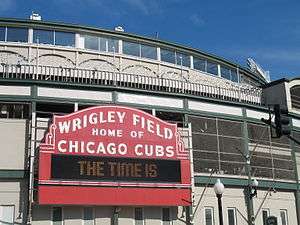
National League Central
- Chicago Cubs - Wrigley Field - Chicago, Illinois (in Lakeview). Few teams can claim the storied history or agony of defeat that the Cubs can, but the curse has come to an end: after going over a hundred years without a championship and not even an appearance in the World Series since 1945, the Cubs finally won the championship in 2016. But win or lose, a game at Wrigley Field is undoubtedly one of the greatest experiences in baseball. The ballpark, one of only two remaining classic ballparks (the other being Fenway Park), is renowned and beloved for its many unique features, from its bright red marquee sign out front, to the ivy-covered outfield walls, to the rooftop seats atop the buildings across the street, and to the surrounding neighborhood which embraces game day to the fullest.
- Cincinnati Reds - Great American Ball Park - Cincinnati, Ohio. The oldest professional team in baseball, the "Big Red Machine" (a nickname earned due to their powerful hitting lineup in the 1970s) have long been entertaining their loyal fans. The Reds' riverfront ballpark is full of nods to the history of the team, including the Cincinnati Reds Hall of Fame and an extensive museum.
- Milwaukee Brewers - Miller Park - Milwaukee, Wisconsin. The Milwaukee faithful pour into Miller Park, which sports a fan-shaped retractable roof and plenty of nods to the city's brewing heritage. A highlight is the "Sausage Race" during the 6th inning, when a group of sausage mascots race around the field. Another mascot, Bernie Brewer, slides down a plastic yellow slide beyond left field after every Brewer home run.
- Pittsburgh Pirates - PNC Park - Pittsburgh, Pennsylvania (on the North Side). The Pirates have had a hard go of it over the last couple of decades, but lately the "Buccos" have found new life, ending a 20-year string of losing seasons with a playoff berth in 2013 and proving strong competitors since. Their stadium is widely considered one of the best in the major leagues, sitting on the city's superb riverfront with a breathtaking view of the Pittsburgh skyline.
- St. Louis Cardinals - Busch Stadium - St. Louis, Missouri. A regular feature in the playoffs, the Cardinals command a huge and enthusiastic fanbase in this diehard sports town. They play on the south side of the city's downtown, with an excellent view of the skyline with its famed Gateway Arch. An impressive hall of fame for the Cardinals is on-site, a testament to the winningest team in the National League (in terms of World Series championships).
National League West
- Arizona Diamondbacks - Chase Field - Phoenix, Arizona. Despite their short history, the Diamondbacks have proved to be a surprisingly strong team in the NL West. Chase Field sports a retractable roof, air conditioning and even a swimming pool beyond the center-right field wall (although the pool is only accessible as part of a luxury suite), must-haves in the blazing Phoenix heat.
- Colorado Rockies - Coors Field - Denver, Colorado. Widely regarded as one of the best ballparks in the major leagues, Coors Field is a retro-style ballpark that has earned a reputation as a home run-friendly park, owing in large part to the dry air and high altitude. The ballpark sits on the edge of the LoDo neighborhood of Downtown Denver, popular for its restaurants and bars as well as the home of the National Ballpark Museum, with a fantastic collection of artifacts from many classic ballparks.
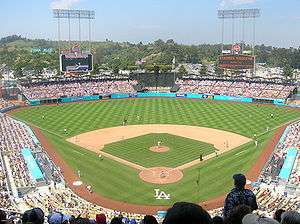
- Los Angeles Dodgers - Dodger Stadium - Los Angeles, California (in Elysian Park). The Dodgers are one of the most famous and successful baseball teams of all time, with a long history in Los Angeles since their move here from Brooklyn in the 1950s. Their ballpark, carved out of a hill north of Downtown L.A., is the largest baseball stadium in the world by seating capacity and has earned a reputation as a pitcher's park, and is also perhaps the best remaining example of the modernist stadiums built in the 1960s.
- San Diego Padres - Petco Park - San Diego, California (in Downtown). Sandwiched into Downtown San Diego near the harborfront and the historic Gaslamp Quarter district, Petco Park has a number of unique elements, including a historic brick warehouse incorporated into the left-field seats and a grassy lawn beyond the center field wall that's open as a public park on non-game days. The stadium has gained a distinction as the most pitcher-friendly park in the major leagues, due to the dense, humid air along the nearby coast.
- San Francisco Giants - Oracle Park - San Francisco, California (in SoMa). One of the oldest teams in baseball, having played in New York prior to their move to California in the 1950s, the Giants play in Oracle Park (recently renamed from AT&T Park), a popular retro-style ballpark looking out on the bay. A small cove next to the park is the frequent target of home runs, which makes it popular for kayakers hoping to snag a souvenir. The Giants haven't always had an easy time of it since moving to San Francisco, but a trio of recent World Series victories have made them a force to be reckoned with.
Spring training
Prior to the start of the regular season, the Major League teams participate in a series of exhibition games through the month of March. Spring Training is an opportunity to get a lot closer to your favorite players than would be possible during the regular season. For climate-related reasons, all Spring Training games are held in Arizona or Florida, the Cactus League and Grapefruit League respectively.
Cactus League
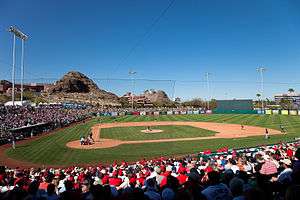
- Arizona Diamondbacks - Salt River Fields at Talking Stick - Scottsdale
- Chicago Cubs - Sloan Park - Mesa
- Chicago White Sox - Camelback Ranch - Glendale
- Cincinnati Reds - Goodyear Ballpark - Goodyear
- Cleveland Indians - Goodyear Ballpark - Goodyear
- Colorado Rockies - Salt River Fields at Talking Stick - Scottsdale
- Kansas City Royals - Surprise Stadium - Surprise
- Los Angeles Angels - Tempe Diablo Stadium - Tempe
- Los Angeles Dodgers - Camelback Ranch - Glendale
- Milwaukee Brewers - Maryvale Baseball Park - Phoenix
- Oakland Athletics - Hohokam Stadium - Mesa
- San Diego Padres - Peoria Sports Complex - Peoria
- San Francisco Giants - Scottsdale Stadium - Scottsdale
- Seattle Mariners - Peoria Sports Complex - Peoria
- Texas Rangers - Surprise Stadium - Surprise
Grapefruit League
- Atlanta Braves - Champion Stadium - ESPN Wide World of Sports complex at Walt Disney World.
- Baltimore Orioles - Ed Smith Stadium - Sarasota
- Boston Red Sox - JetBlue Park at Fenway South - Fort Myers
- Detroit Tigers - Joker Marchant Stadium - Lakeland
- Houston Astros - The Ballpark of The Palm Beaches - West Palm Beach
- Miami Marlins - Roger Dean Stadium - Jupiter
- Minnesota Twins - Hammond Stadium - Fort Myers
- New York Mets - Tradition Field - Port St. Lucie
- New York Yankees - Steinbrenner Field - Tampa
- Philadelphia Phillies - Bright House Field - Clearwater
- Pittsburgh Pirates - McKechnie Field - Bradenton
- St. Louis Cardinals - Roger Dean Stadium - Jupiter
- Tampa Bay Rays - Charlotte Sports Park - Port Charlotte
- Toronto Blue Jays - Florida Auto Exchange Stadium - Dunedin
- Washington Nationals - The Ballpark of The Palm Beaches - West Palm Beach
All-Star Game
Held every year in early to mid-July, the All-Star Game is an exhibition game pitting the best players in the American League against the best of the National League. Wherever it is held, the All-Star Game is the centerpiece of a week-long celebration, which includes a fan fest and a home run derby. The league determines the location of the game in advance, and tickets are very expensive.
Upcoming All-Star Games:
- 2019: July 9 at Progressive Field in Cleveland
Playoffs/World Series
Every October, the leaders of each of the three divisions plus two Wild Card teams (the teams with the two best records among non-division-winners) from each league will compete in the playoffs, with the winners advancing to the World Series championship. The World Series pits the winner of the National League playoffs against the winner of the American League playoffs.
Get in
Details for getting into each city are in the individual city articles. All major league teams are in major cities, with excellent air and road access. In some parts of the country it is possible—with careful planning—to hop from city to city and see multiple stadiums in the course of several days. This is easiest on the Eastern Seaboard (Boston/New York City/Philadelphia/Baltimore/Washington, D.C.) with convenient road and rail access and relatively short distances between cities. With a car, this can also easily be done in the Midwest (Pittsburgh/Cincinnati/Cleveland/Detroit/Toronto or Minneapolis/Milwaukee/Chicago/St. Louis) or California (San Diego/Anaheim/Los Angeles/Oakland/San Francisco). Outside these areas, however, the distances between cities are simply too great to make this feasible except by airplane.
Parking and accessibility varies considerably between ballparks. In general, stadiums in cities in the Northeast and in the Midwest will see heavy traffic and limited, expensive parking, while those in the South and the West will have ample parking, though there are exceptions to this. All stadiums charge for parking, generally in the range of $10-$25 depending on the individual stadium and how close you park to the ballpark, with certain high-demand teams charging more.
For the most part, all stadiums have made a strong attempt to provide enough parking, but in a few cases—namely Boston, New York City, Washington, D.C., Chicago, Toronto and San Francisco—parking is such a challenge that it's preferable to use the local mass transit systems, which are well-developed in these cities and do a good job serving games.
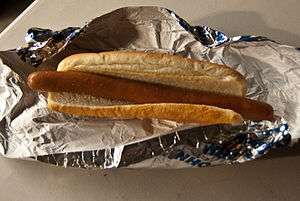
Buy
- All teams have a team store at the stadium to purchase jerseys, hats, and other memorabilia.
- Team merchandise can often be purchased at nearby stores for less than what the stadiums charge.
Eat
- All stadiums have a plethora of eating options (mostly fast food) from standard ballpark fare like hot dogs, hamburgers and nachos to more specialized eats like sausages in Milwaukee, fish tacos in San Diego, and sushi in Seattle. Prices usually run between $3-$5 for hot dogs and $10 or more for specialized food like barbecue or chicken. Ballpark food is usually more expensive than comparable food sold at restaurants.
Drink
- Most baseball stadiums sell beer, albeit at prices higher than bars or liquor stores. Some ballparks also serve wine or cocktails. For drinkers of non-alcoholic beverages, sodas or bottled water are also available.
Respect
- Smoking is prohibited in most locations in most stadiums. Some may ban it in all locations.
- Many stadiums prohibit coolers, large bags, backpacks, plastic or glass bottles, cans and video cameras from the stadium. Check specific stadium policies before attending. All stadiums will ban knives, firearms, fireworks, and noisemakers.
Minor League Baseball
Minor League Baseball is the general name for a group of developmental leagues operated by major league teams for younger players who have not yet developed the skills to play in the major leagues. Almost all small to mid-sized cities in America will have a minor league team of some sort, and it's considered a very affordable and fun alternative to higher priced major league games. The leagues are organized in a system based on the level of talent. Triple-A is the highest dropping down to Single A level and then to the Rookie Ball level. Minor League Baseball operates from early April to early September, though lower levels may only play from late June until late August. The minor leagues are praised for being fan-friendly and cost-efficient for families.
Tickets generally cost between $7 and $15 each, with special promotions sometimes lowering that price. At almost all stadiums, it is possible to purchase tickets at the gate, but some higher level teams sell out ahead of time. Parking will either be free or available for a small fee, and because these are smaller cities, mass transit will usually be sparse or non-existent. Food is priced similarly to major league stadiums and generally the same things are available, although variety decreases dramatically below the Triple-A level.
Leagues
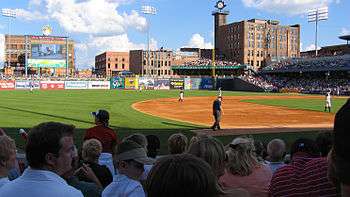
Class AAA, or Triple-A, covers most of the largest metropolitan areas without Major League Baseball franchises, as well as some smaller cities.
- International League (mainly cities in the eastern part of the country)
- Buffalo Bisons, Charlotte Knights, Columbus Clippers, Durham Bulls, Gwinnett Stripers (Lawrenceville), Indianapolis Indians, Lehigh Valley IronPigs (Allentown), Louisville Bats, Norfolk Tides, Pawtucket Red Sox, Rochester Red Wings, Scranton/Wilkes-Barre RailRiders, Syracuse Mets, and Toledo Mud Hens.
- The Pawtucket Red Sox will move to Worcester, Massachusetts in 2021, presumably retaining the "Red Sox" name.
- Buffalo Bisons, Charlotte Knights, Columbus Clippers, Durham Bulls, Gwinnett Stripers (Lawrenceville), Indianapolis Indians, Lehigh Valley IronPigs (Allentown), Louisville Bats, Norfolk Tides, Pawtucket Red Sox, Rochester Red Wings, Scranton/Wilkes-Barre RailRiders, Syracuse Mets, and Toledo Mud Hens.
- Pacific Coast League (mainly cities in the western and midwestern parts of the country)
- Albuquerque Isotopes, El Paso Chihuahuas, Fresno Grizzlies, Iowa Cubs (Des Moines), Las Vegas Aviators, Memphis Redbirds, Nashville Sounds, New Orleans Baby Cakes (Metairie), Oklahoma City Dodgers, Omaha Storm Chasers (Papillion), Reno Aces, Round Rock Express, Sacramento River Cats, Salt Lake Bees, San Antonio Missions, and Tacoma Rainiers.
- The Baby Cakes have announced plans to move to Wichita, Kansas in 2020, with the team to play under a new name.
- Albuquerque Isotopes, El Paso Chihuahuas, Fresno Grizzlies, Iowa Cubs (Des Moines), Las Vegas Aviators, Memphis Redbirds, Nashville Sounds, New Orleans Baby Cakes (Metairie), Oklahoma City Dodgers, Omaha Storm Chasers (Papillion), Reno Aces, Round Rock Express, Sacramento River Cats, Salt Lake Bees, San Antonio Missions, and Tacoma Rainiers.
Class AA, or Double-A, teams can be found in many mid-sized cities.
- Eastern League
- Akron RubberDucks, Altoona Curve, Binghamton Rumble Ponies, Bowie Baysox, Erie SeaWolves, Harrisburg Senators, Hartford Yard Goats, New Hampshire Fisher Cats (Manchester), Portland Sea Dogs, Reading Fightin Phils, Richmond Flying Squirrels, and Trenton Thunder.
- Southern League
- Biloxi Shuckers, Birmingham Barons, Chattanooga Lookouts, Jackson Generals, Jacksonville Jumbo Shrimp, Mississippi Braves (Pearl), Mobile BayBears, Montgomery Biscuits, Pensacola Blue Wahoos, and Tennessee Smokies (Sevierville, near Knoxville).
- The BayBears will relocate within Alabama to Madison, near Huntsville, in 2020, where they will be known as the Rocket City Trash Pandas.
- Biloxi Shuckers, Birmingham Barons, Chattanooga Lookouts, Jackson Generals, Jacksonville Jumbo Shrimp, Mississippi Braves (Pearl), Mobile BayBears, Montgomery Biscuits, Pensacola Blue Wahoos, and Tennessee Smokies (Sevierville, near Knoxville).
- Texas League
- Amarillo Sod Poodles, Arkansas Travelers (North Little Rock), Corpus Christi Hooks, Frisco RoughRiders, Midland RockHounds, Northwest Arkansas Naturals (Springdale), Springfield Cardinals, and Tulsa Drillers.
Class A, or Single-A, teams can be found in many small cities, as well as mid-sized cities near larger cities already served by higher level teams. Uniquely, New York City has two teams in the short-season New York–Penn League, one in Brooklyn and the other on Staten Island, each being affiliated with one of the city's MLB teams.
- High-A leagues: California League (Modesto, San Bernardino, San Jose, Stockton, etc.), Carolina League (Frederick, Myrtle Beach, Wilmington, Winston-Salem, etc.), and Florida State League (Daytona Beach, Fort Myers, Tampa, etc.).
- Low-A leagues: Midwest League (Cedar Rapids, Dayton, Fort Wayne, Peoria, etc.) and South Atlantic League (Asheville, Charleston, SC, Charleston, WV, Greensboro, Lexington, Savannah, etc.).
- Short-Season A leagues: New York-Penn League (Auburn, Burlington, Williamsport, etc.) and Northwest League (Boise, Eugene, Spokane, Vancouver, etc.).
Rookie Level
- Appalachian League - teams in Virginia, West Virginia, Tennessee, and North Carolina.
- Arizona League - teams in Arizona
- Gulf Coast League - teams in Florida
- Pioneer League - teams in Montana, Colorado, Idaho, and Utah
College Baseball
College Baseball is the general term for non-professional baseball organized by either the National Collegiate Athletic Association (NCAA), the National Association of Intercollegiate Athletics (NAIA), or the National Junior College Athletic Association (NJCAA); the last of these governs only two-year colleges. College baseball play can run the gamut from high level programs such as the University of Oregon, University of North Carolina, and University of Miami which compete in the NCAA, to small schools like Lewis-Clark State University of the NAIA. The biggest event in college baseball is the College World Series, an NCAA sanctioned event featuring the best college baseball teams held each June in Omaha. Almost all four-year colleges, plus a fair number of two-year schools, will have a baseball team and play runs from February to June. College baseball games are usually sparsely attended and seats are very cheap, if not free.
College World Series
Held in Omaha every June, the CWS pits eight teams against each other. The tournament is divided into two four-team double-elimination brackets, with the winners of each bracket then playing a best-of-three series to choose the NCAA Champion. Tickets range from $28-33 for reserved seats and $11 each or $80 for ten for general admission (non-guaranteed) seats. Tickets generally go on-sale in May.
National Alliance of College Summer Baseball
These are NCAA-sanctioned summer baseball leagues, partially funded by Major League Baseball, drawing from college-age players. A high percentage of drafted players come from these leagues.
- Cape Cod Baseball League, Cape Cod, Massachusetts. Over 110 years of history. One in seven Major League Baseball players played in this league.
- Central Illinois Collegiate League, Illinois.
- Great Lakes Summer Collegiate League.
- New York Collegiate Baseball League, New York.
- Atlantic Collegiate Baseball League, Pennsylvania, New York and New Jersey.
- Southern Collegiate Baseball League.
- Valley Baseball League, Virginia.
- Florida Collegiate Summer League, Florida.
- Coastal Plain League, North Carolina, South Carolina, and Virginia.
Though it's not an NACSB-sponsored league, the Alaska Baseball League is a collegiate summer league that's worthy of special note as the host of the Midnight Sun Game, an experience that's unique in the sport of baseball—it's played on the summer solstice in the midnight sun, beginning around 11PM, at Growden Memorial Park in Fairbanks, the northernmost baseball stadium in the world. The ABL boasts over a century of history and such famous alumni as Barry Bonds, Jason Giambi, and Mark McGwire.
High School Baseball
High School Baseball is played around the nation by teams organized by each individual high school. The level of play is lower than college baseball, though some elite schools produce multiple college baseball players each year. Schools typically play local and regional competition in an April through June schedule. There is no national championship like in college baseball or pro levels, and teams rarely charge to attend games.
Little League Baseball
Little League Baseball is a collection of youth baseball leagues run by Little League Baseball. It operates leagues for children from ages 8-18. Its premier event is the Little League World Series. In almost any town across the country, you can find a Little League game between April and June, and seating is free with most places having a food stand of some kind.
Little League World Series
Held in South Williamsport, Pennsylvania, every August, the LLWS pits sixteen teams of 11-12 year olds from around the world in a tournament to prove the best team. It's very popular among people of all ages, and the atmosphere is electric for every game. Tickets are available on a first-come-first-served basis for all games except the World Championship Game. Those tickets are distributed by a lottery system, but seating beyond the stadium fences is always available.
Museums and other attractions
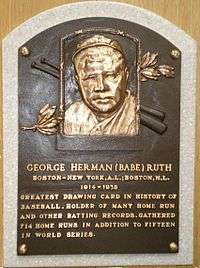
In addition to the many, many opportunities to take in a baseball game, there are also plenty of museums in cities across the country devoted to the game, from the Hall of Fame in Cooperstown to little museums dedicated to hometown heroes and many more. Here are just some of the most noteworthy sights to take in the history of the sport:
- A destination for any baseball fan is Cooperstown, New York, home to the National Baseball Hall of Fame, which honors the game's history and its finest players. According to folklore, Cooperstown is where the game of baseball was invented, but no one has been able to prove that this is the case. Nevertheless, the town has become synonymous with the history of baseball and is a must-visit for baseball fans.
- While popular legend suggests that Cooperstown was where the game was invented, history makes a compelling case that Elysian Fields in Hoboken is the actual birthplace of baseball, where the first organized game of baseball was played in 1846. Since then the fields have been developed into housing, so no remnant of the field exists, although its location is marked by a plaque at 11th and Washington Streets.
- On the campus of the Montclair State University in New Jersey is the Yogi Berra Museum, devoted to the life and career of the famous Yankee, with a collection of artifacts and memorabilia that puts the museum in Yankee Stadium to shame.
- Right around the corner from Camden Yards in South Baltimore is the Babe Ruth Museum, which preserves the house where the Great Bambino himself was born. There are also displays on baseball's most famous player, as well as an exhibit on the 500-home run club.
- In South Williamsport, home to the Little League World Series every August, is the Little League Museum, with lots of Little League trivia and memorabilia, and a hall devoted to distinguished ex-Little Leaguers.
- The University of Pittsburgh campus in Pittsburgh is home to two remnants of Forbes Field, a beloved stadium that was torn down when the Pirates moved to new digs on the riverfront. Inside the university's Posvar Hall is the old home plate in a glass case embedded in the floor, while outside is a section of the left field wall where Pirate Bill Mazeroski hit a walk-off home run to win the 1960 World Series. Every October 13th, Pirates faithful mark the occasion by turning out at the wall to listen to a radio broadcast of that game.
- The site of the Atlanta Braves' old home, Atlanta–Fulton County Stadium in South Atlanta, has a preserved section of wall where Hank Aaron hit his historic 715th career home run to break Babe Ruth's record. Georgia State University, which now owns the stadium site, is planning to build a new ballpark for its baseball team at the site, and plans to incorporate the Aaron wall in the structure.
- The Louisville Slugger Museum allows you to tour the factory where the official bat of the major leagues is made. In addition to watching bats get made, you can also view plenty of memorabilia and get a custom name bat as a souvenir. Finding the museum is easy enough, thanks to the giant six-story replica of Babe Ruth's bat—"the world's largest bat"—standing outside.
- Kansas City's 18th & Vine Historic District, an important center for jazz, is home to the Negro League Baseball Museum, which honors the history of the Negro Leagues, a historic league for African Americans that was segregated from the major leagues, which from the 1920s to major league baseball's integration produced some of the sport's greatest players. The museum tells the history of the leagues in loving detail, with lots of memorabilia to take in.
- Outside the town of Dyersville, Iowa, west of Dubuque, sits the Field of Dreams, the movie set for the popular 1989 film (and unabashed celebration of the game) Field of Dreams. The attraction is a simple one, with the set preserved as it appears in the movie with only a small souvenir stand nearby.
- Housed inside a shopping center in Fargo is the Roger Maris Museum, devoted to the hometown hero and former Yankee, who was the first to beat Babe Ruth's single season home run record. The museum is small but contains plenty of Yankee memorabilia from the 1960s.
- Across the street from Coors Field in Denver is the National Ballpark Museum, the culmination of one of the most fantastic private collections of baseball artifacts ever seen, with a stunning amount of artifacts from the classic ballparks of old, including signs, bricks, seats, light fixtures from Ebbets Field, and a section of Fenway Park's Green Monster.
Outside the United States
Baseball has spread from the United States to other countries. The premier international baseball tournament is the World Baseball Classic, organized by MLB and sanctioned by the World Baseball Softball Confederation (WBSC). The tournament is held every four years, with the next one scheduled for 2021.
Outside the United States, the following countries have a large number of baseball fans and players:
- Canada
- Mexico
- Puerto Rico
- Cuba
- Dominican Republic
- Nicaragua
- Panama
- Venezuela
- Japan
- South Korea
- Taiwan
- Philippines